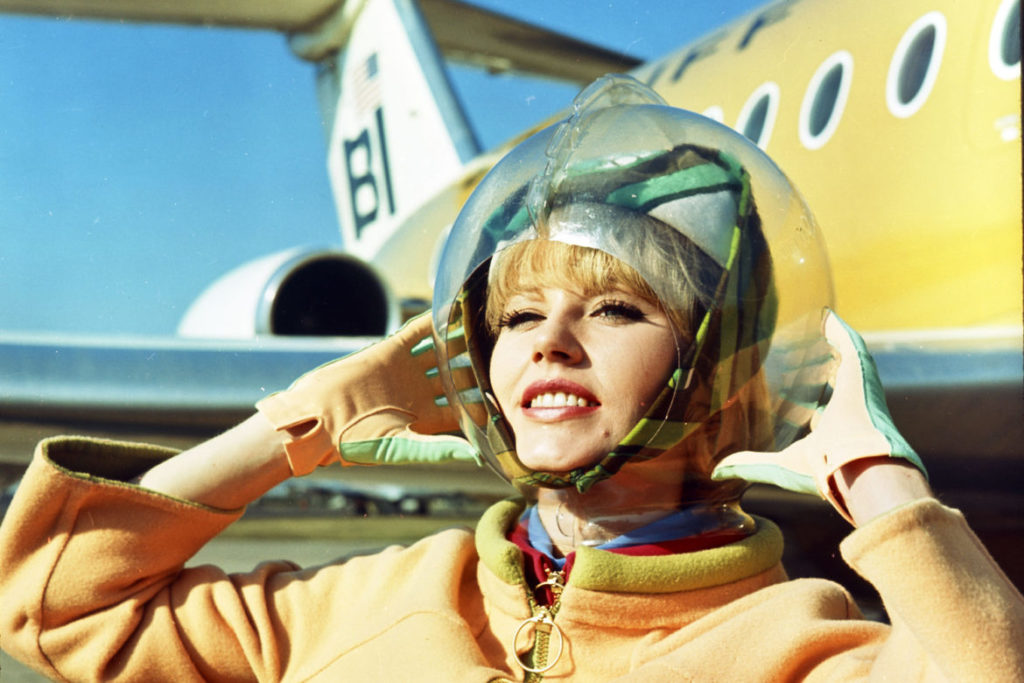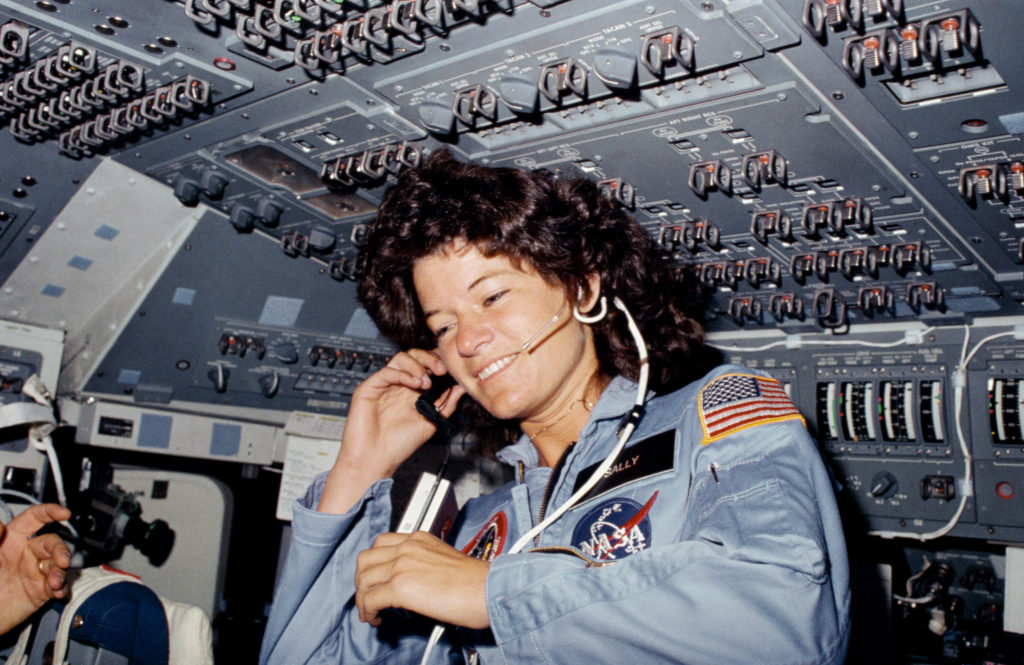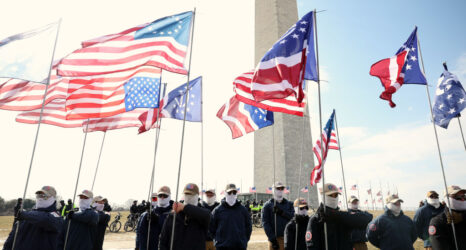Today’s American women astronauts are actively participating in NASA space missions, and increasing numbers of female planetary scientists are serving as principal investigators in future exploratory missions in space.
These women owe much to pioneering astronauts like Dr. Sally Ride, who became America’s first woman in space on the STS-7 in 1983; Dr. Mae C. Jemison, a physician who became the first African-American female astronaut in 1992, as a mission specialist on the Space Station Endeavour; and Dr. Ellen Ochoa, who, in 1993, became America’s first Latina woman in space and participated in four space missions.
“Imaging Women in the Space Age,” my new exhibit now on view at the New York Hall of Science in Queens through November 2019, showcases these women’s remarkable achievements—and also highlights how the idea of women in space has long fascinated filmmakers, television writers, advertisers and fashion designers.

Italian designer Emilio Pucci created plastic bubble helmets for Braniff Airlines’ flight attendants in the 1960s, and André Courrèges created fanciful fashions for the space age. Space women were featured in popular films of the 1960s and 1970s—including Barbarella, starring Jane Fonda, and Alien, starring Sigourney Weaver—and space women appeared in vintage American television series like “Lost in Space” and “Star Trek.” And even thousands of years before that, there were cultural images of moon goddesses such as Artemis, the Greek goddess of the moon also known as Selene; Luna, in Ancient Rome; and Chang’e, in China.
But for all the cultural fantasies, real-life female aviators, and women who wanted to join America’s astronaut program, often had to confront resistance and skepticism about their capabilities.
Pioneering female pilots like Ruth Law and Amelia Earhart, and the WASPs—Women Air Force Service Pilots who ferried planes and were instructors in World War II—all proved their remarkable prowess, but, as I wrote about in my book Women and the Machine: Representations From the Spinning Wheel to the Electronic Age, they frequently had to confront and disprove gender stereotypes about their abilities.
Being admitted to NASA’s astronaut program was not easy for women aviators. In the early 1960s, the group of 13 American women flyers later called the “Mercury Thirteen,” including Geraldyn “Jerrie” Cobb, successfully passed the same physiological tests given to would-be American male astronauts, but the program ended with the Navy withdrew its cooperation. (The civilian tests for the “Women in Space” program” were given by Dr. William Randolph Lovelace II at his foundation clinic in Albuquerque, New Mexico.)
NASA’s requirements for the astronaut program at the time would have prevented the women from becoming astronauts in any case: Astronauts were required to have training as test pilots for jets and have engineering degrees, and because American women were not yet allowed to be fighter pilots, they weren’t admitted to America’s two military training schools offering the needed test pilot instruction.
The first woman in space was Soviet cosmonaut Valentina Tereshokova, in 1963, but it wasn’t until 1978 that the first group of American women were admitted to NASA’s astronaut training program—leading to Sally Ride’s landmark mission as first American women in space.

Remarkable African-American women mathematicians like Katherine Johnson, who were instrumental in calculating flight trajectories for NASA’s Mercury missions, also had to deal with racism—as so compellingly portrayed in the Hollywood film Hidden Figures. (Johnson was later asked to use her mathematical skills in helping with the Apollo 11 mission.)
Fifty years after the Apollo 11 moon landing, filmmakers and television producers are still fascinated by portrayals of women in space—seen in Gravity, starring Sandra Bullock—and fashion designers like the late Karl Lagerfeld are still being inspired by the world of space. There are also more and more American women are in NASA’s astronaut program—today, women make up about one-third of the astronaut pool. There is still a need to encourage more young women to enter into space-related academic programs, and still gaps in their representation, but women today are working as astrophysicists and aerospace engineers.
One of today’s remarkable ground-breakers is Dr. Dava J. Newman, Apollo Professor of Astronautics and Engineering Systems at MIT—who, working with colleagues, students and collaborators throughout the world, has been developing the BioSuit. These “second skin” form-fitting suits will allow for greater mobility than today’s bulky and stiff gas-filled space suits and are revolutionary in design.
As Dr. Newman wrote to me, these new space suits will have a “custom fit and custom design, so you can tell the difference between female, male, tall, short, etc. It’s a unique suit for each unique wearer.” She added that the suits will help to be an inspiration for girls and young women. “I do believe they need to ‘see’ themselves as astronauts and aerospace engineers to open up their minds and to allow themselves to accomplish these dreams!” (Indeed, NASA also needs something for them to wear.)
Soon there will be more exciting developments. NASA is gearing up to land its first female on the moon in 2024—a mission which will aptly be named Artemis, the goddess of the moon.





